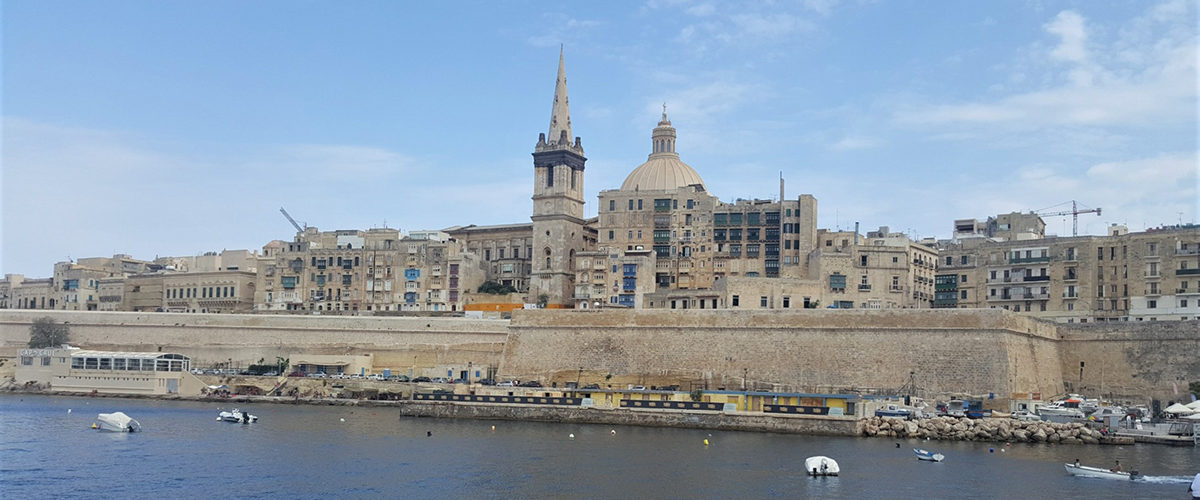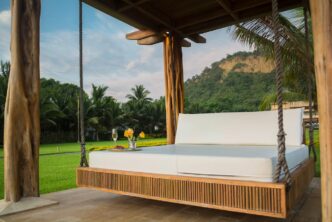Lorraine Worsley-Carter goes mad for Malta
No one ever told me that Valletta, Malta’s capital, is so cool!
We chose Valletta, voted 2018’s Capital of Culture, for another 48-hour escapade into another culture. Some might assume that, because of Malta’s past links with the UK, the culture would not be too far removed. In World War II, Malta became the most bombed place on Earth when nearly 7,000 bombs fell in a six-week period. The courageous Maltese were awarded the George Cross in 1942, “to bear witness to a heroism and devotion that will long be famous in history”. The people of Malta, who I met, were some of the friendliest and most hospitable it was ever my pleasure to meet, and Malta has an identity all of its own.
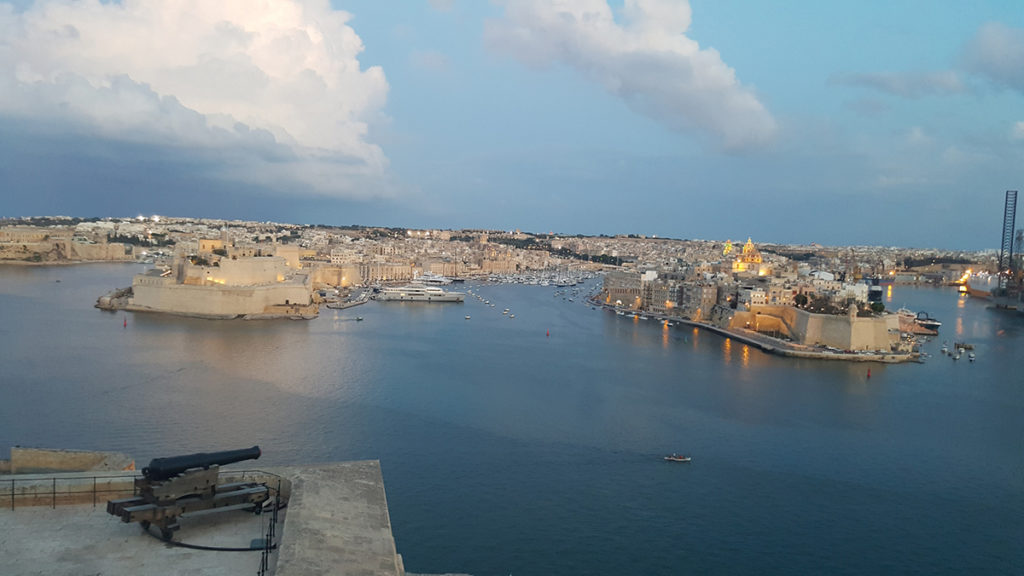
Malta’s strategic position has meant that the island has been the location of many wars over its 7,000-year history. Malta is an archipelago situated in the central Mediterranean some 80 kilometres from southern Italy. Only the three largest islands – Malta, Gozo and Comino – are inhabited. Surrounded by the changing hues of the Mediterranean Sea, with 300 days of sunshine at its beck and call, Malta is a delight.
Years ago, I sailed into Malta on a cruise ship and, with my fellow travellers, had ‘done Malta’ in a day. Well, a day certainly gave me the curiosity to return and the desire to give Malta a little bit more respect than just ‘popping in’. Hence our weekend in cosmopolitan Valletta.
The island is small, just 27 kilometres (17 miles) long and 14.5 kilometres (9 miles) wide, and transport links around the island seem good, but we decided to concentrate on Valletta. The city was built by the Knights of the Order of St John, and much of their architecture survives today, as does their art, which can be found in St John’s Co-Cathedral.
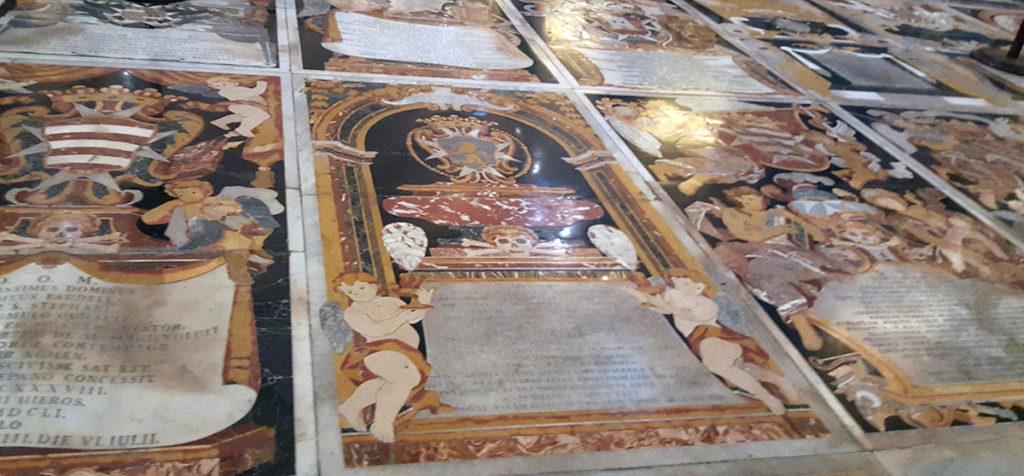
A tip here is to allow the cruise traffic to queue beneath the morning and midday sun, then return around 3pm when they are safely back on-board. In our experience, you can just walk up and pay without booking ahead, and there were no queues at that time. It is worth noting, though, that closing time seems to be before 4.30pm or so, so plan your visit time appropriately.
We took advantage of the audio guide, which is included in the price, and we learned about the astounding treasures that overflowed at every turn of the head. The richly engraved tombstones of the aristocratic knights that form the marble floor, each more beautiful and elaborate than the last, portray their coat of arms and, to me, were vaguely reminiscent of tarot cards with their symbols of the predictability of death.
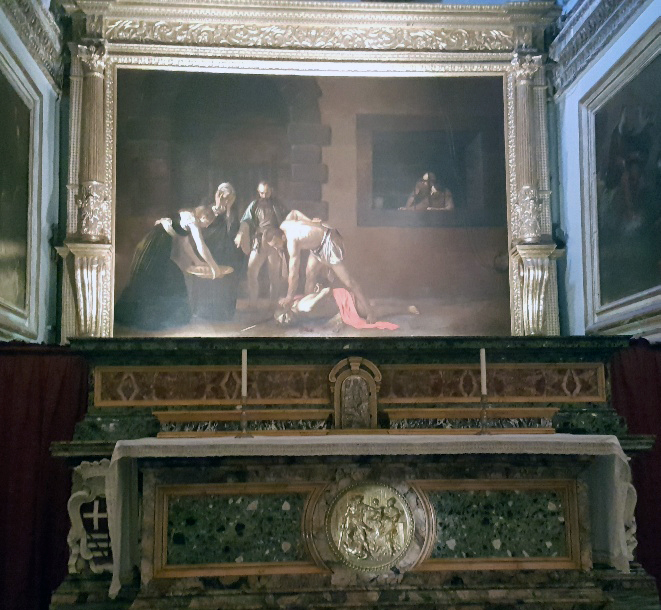
The celebrated artist Caravaggio’s 1608 masterpiece ‘The Beheading of St John the Baptist’ has pride of place in the Knight’s house of worship, however, the poor artist himself, at first feted and made a Knight by the Grand Master, was later imprisoned for brawling with a fellow Knight and, although he managed to escape, was stripped of his Knighthood.
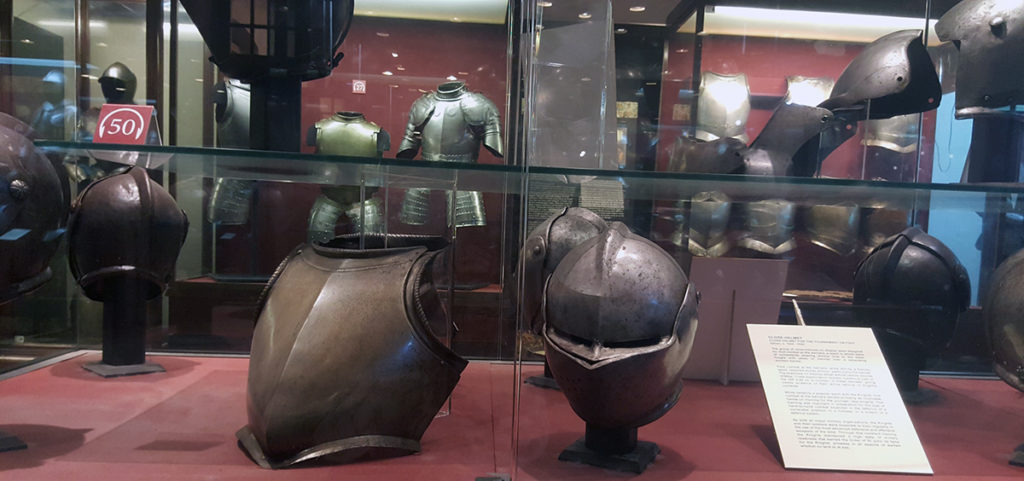
Talking of the Grand Master, it only seemed right to pay a visit to the 16th century Palace, which was the home of the incumbent Grand Master, head of the Order of Knights, for over 200 years. Sadly for us we were unable to view and admire all the riches within, as restoration work was taking place (note to the Tourist Board – it would perhaps have been nice to reflect this in price), but it was impossible not to gaze and wonder at the tapestries, chandeliers, friezes and the lavishly decorated marble corridors where only the chosen few would have stepped. Should the Palace have had all its public rooms available to view, then I would probably not have visited the Armoury – but that would have been a missed opportunity. There are around 5,000 pieces of armour and weapons, and I marvelled at the sheer upper body strength it must have required to even stand up and walk, never mind defend Valletta, during the Great Siege of Malta in 1565.
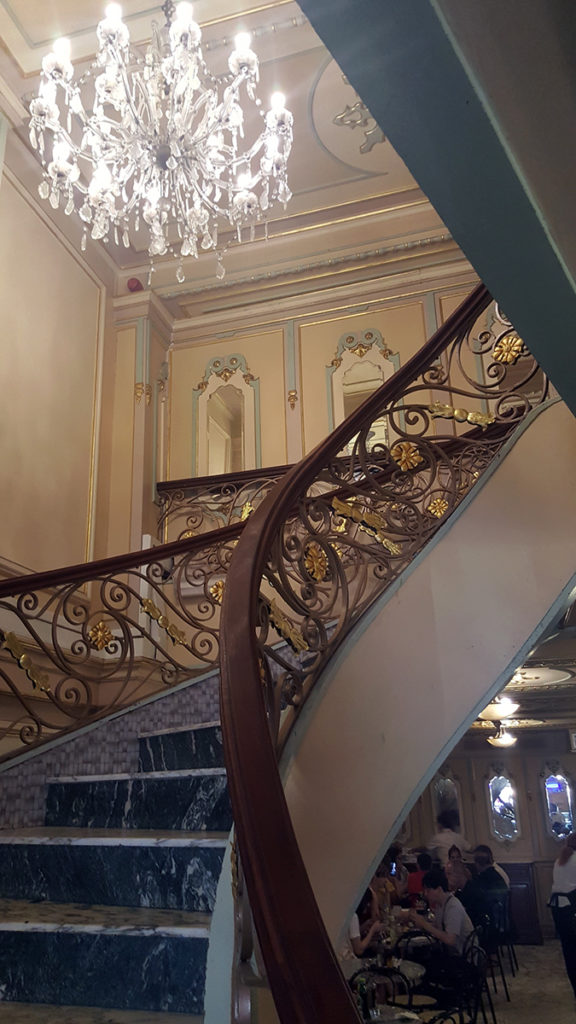
After so much history a step into a gentler era was much required and Café Cordina, Valletta’s oldest café, did not disappoint. We felt a little like we were back in Le Train Bleu restaurant in Paris, and it was a pleasure to be seated in the beautifully ornate tea room-come-brasserie, a favourite with locals and tourists alike since 1944. A veritable feast awaited and we snacked on pastizzi, a Maltese pastry made from filo and puff pastry and stuffed with savoury or sweet fillings, and imqaret – deep fried pastries stuffed with dates, citrus and spices – accompanied by a fabulous frothy coffee.
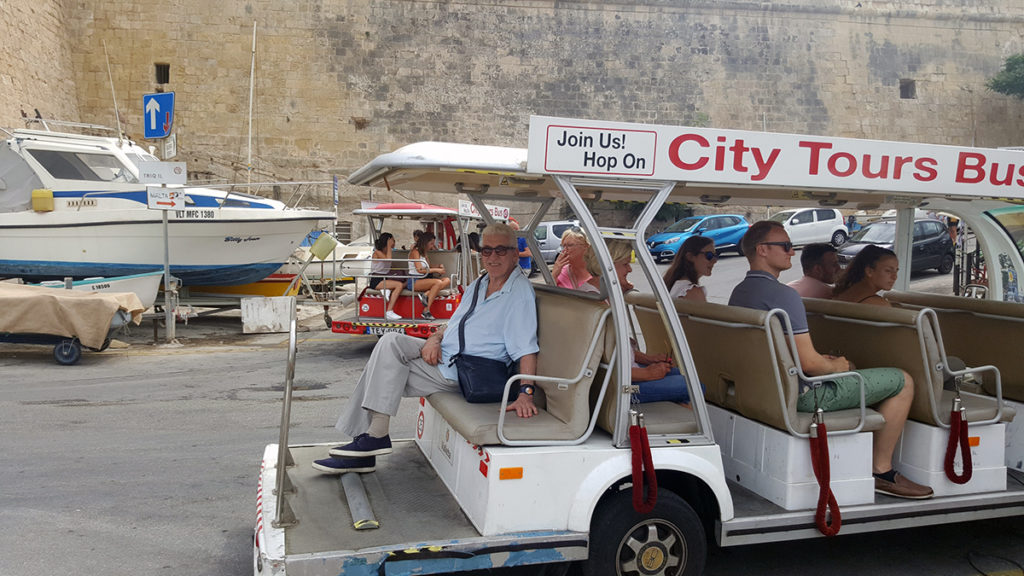
Sugar rush completed, we decided to change a habit of lifetime and take the hop-on-hop-off bus around Valletta. We know that a tour bus is the best way to see the maximum sites of a city in the minimum amount of time, however, we usually prefer to research in advance and target our choices. Valletta, however, with its stunning architecture, has some vertiginous streets – hence our need for the tour bus. The Maltese people are justly proud of Valletta, so I was surprised to hear that many of the thousands of workers in the tourism industry travel in everyday and live away from this UNESCO World Heritage site.
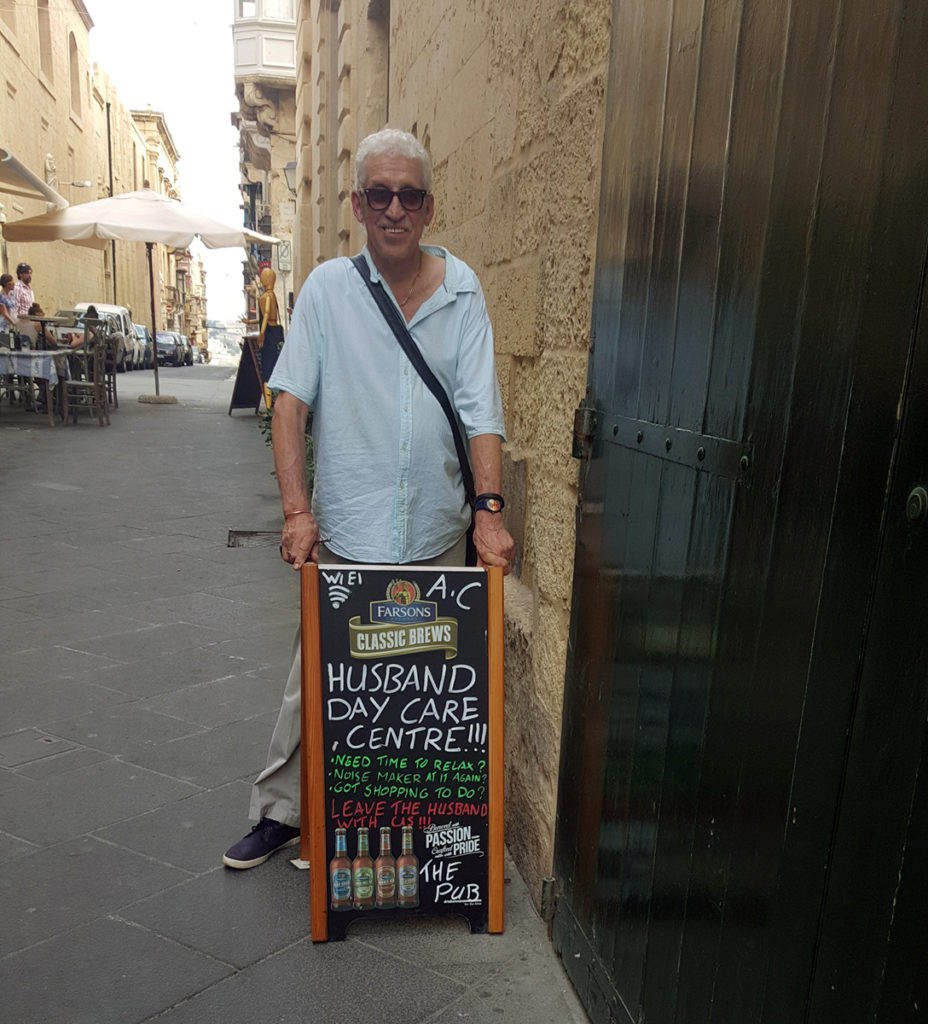
Our hop-on golf buggy-type bus made a stop at the ferry terminal, so we took the opportunity to alight and bought ferry tickets to cross the Marsamxett Bay to Valletta’s neighbour, Sliema. As we crossed the short expanse of water, it felt, to us, like stepping away from the magic of The Knight’s Fortress City into the concrete world of today. There are many hotels, restaurants and shops, with all the usual names we expect… even an M&S! For those seeking a beach holiday, Sliema starts that quest and no doubts leads to fabulous holidays for many. After a pavement café coffee, we hopped back on a ferry and watched eagerly as Valletta and its 16th Century bastion, with its biscuit-coloured limestone walls, came ever nearer, and we emerged once again in the narrow streets of this wonderful city.
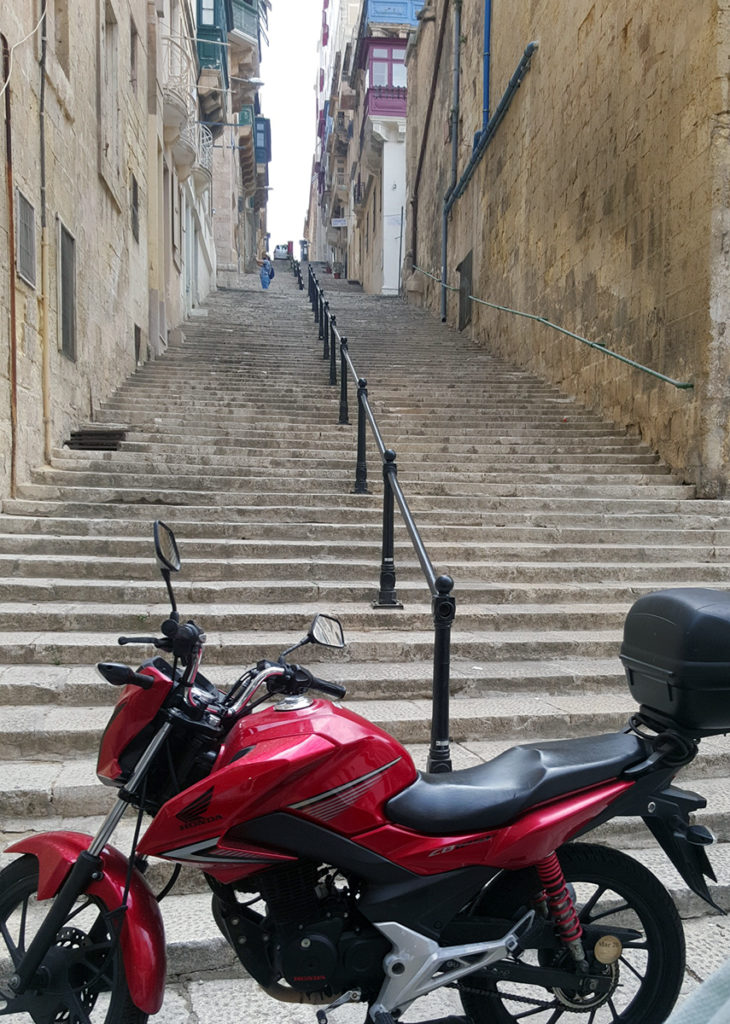
Instagramable sunsets feature highly on many a tourist phone, not least from the Upper Barrakka Gardens. But do bear in mind my aforesaid warning of steep streets – the Upper Barrakka Gardens are best reached by taking the panoramic lift! The cost is around 1 euro and can be combined with a ticket for a ferry crossing to or from The Three Cities, which lie across the Grand Harbour. We didn’t have time to visit The Three Cities of Birgu, Senglea and Bormla, but we will do so on our next visit to Malta and report back.
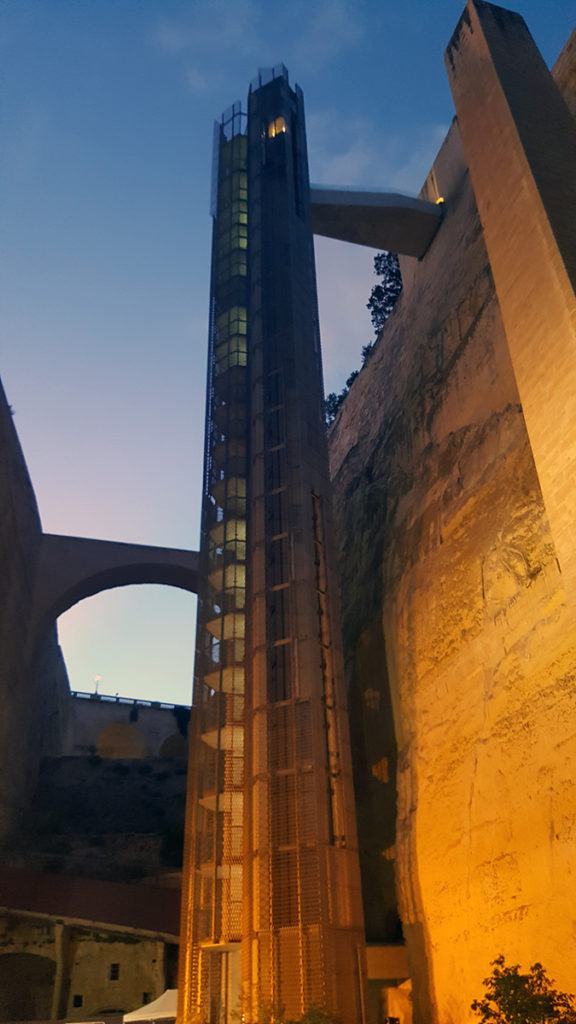
The lush lower gardens stand out because Valletta is not a green city, but it is the view from the upper gardens at sunset that borders on magical. A 15-minute stroll took us to the waterfront, where 19 beautifully restored 18th Century warehouses stand. They were built during the Baroque period and stretch along the water’s edge with a background of historic fortifications. The heritage buildings have been transformed into a variety of lively bars, restaurants and shops, and this is where the cruise liners dock.
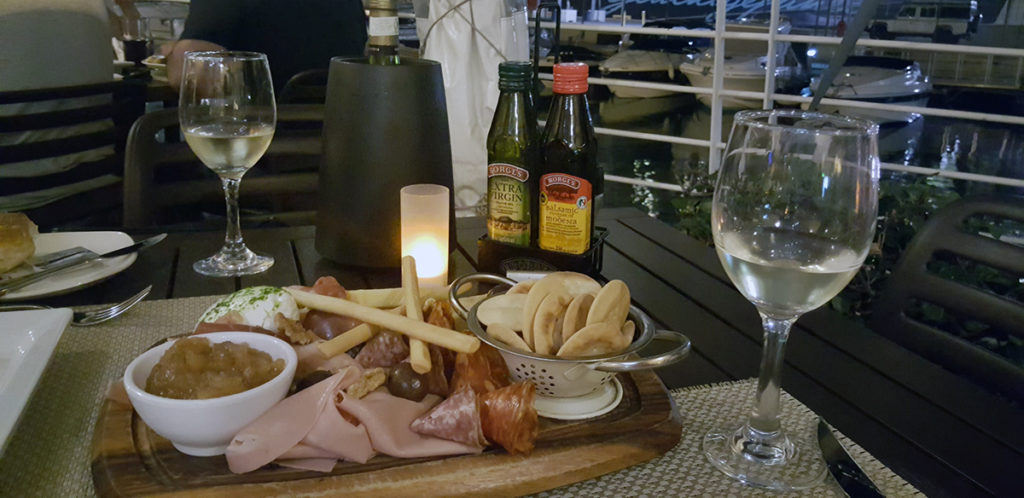
After a hearty antipasti of meats and cheeses, which included gbejnet (a herbed cheese made from sheep’s milk), biglla (a broad bean dip), and chutneys, together with breads of all description, we took a taxi back into the centre of Valletta. The evenings in Valletta take on a cool sophistication not seen outside of Paris… I bet that surprised you! It certainly surprised us, as did the array of venues competing for our nightcap.
We could have chosen from any one of a number of establishments, from champagne and wine bars like Trabuxo on Strait Street, to pubs such as ‘The Pub’ on Archbishops Street, the traditional English watering hole world-famous as the place that the late Olivier Reed had his last drink. He was on the island filming Gladiator at the time. On a less sombre note, I loved the opportunity that ‘The Pub’ presented the following day of ‘Husband Day Care’ while the wives go shopping! This would be unsuitable for my Bob as he is not a beer drinker, but I loved the concept.
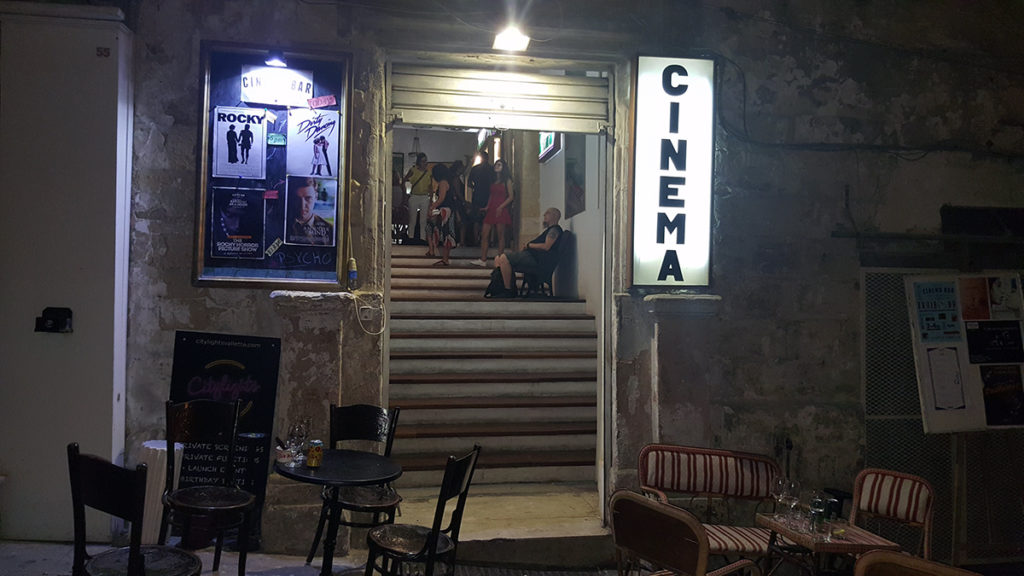
Back to our night cap. We could have visited the local cinema, which sported a bar, but instead we opted for our by now favourite haunt, St John’s Square, where the brightly-lit columns of St John’s Co-Cathedral dominates, ensuring there is enough light under the stars for the many eateries to provide an array of outside tables. The enticing aroma of delicious local dishes blended harmoniously with the live music of the singer providing us with a variety of romantic ballads. This perfect scene provided a perfect backdrop for a dessert of Qaghaq ta’Ghasel, baked honey rings filled with a rich treacle and spice-based paste, washed down with local white wine.
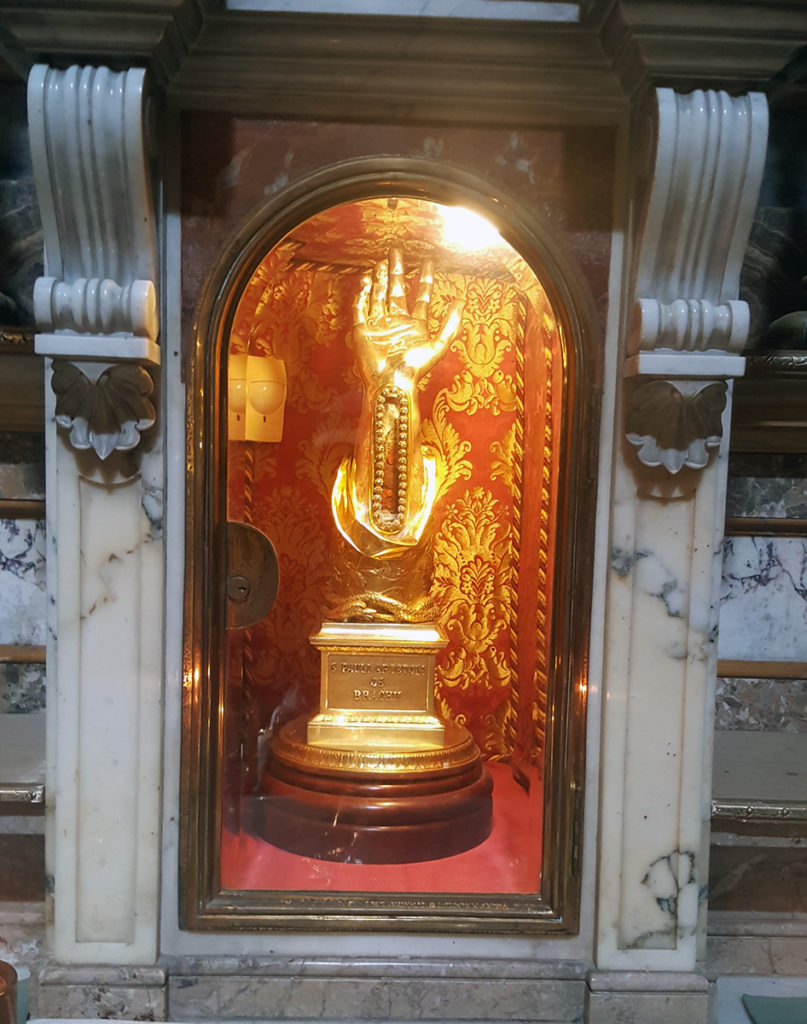
Before leaving for the airport the following day, we visited St Paul’s Shipwreck Church – well, how could we not after we had seen the A-board outside that reads ‘St Paul’s Shipwreck Church – worth visiting’. For many people, the arrival of St Paul in AD60 is the most celebrated event in Malta’s history. The Baroque church is dedicated to St Paul, Malta’s Patron Saint, and although this is not the place he landed, it is nonetheless here that you have the chance to marvel at the much revered-relic of St Paul’s wrist bone, as well as a section of a pillar on which it is believed that St Paul was beheaded.
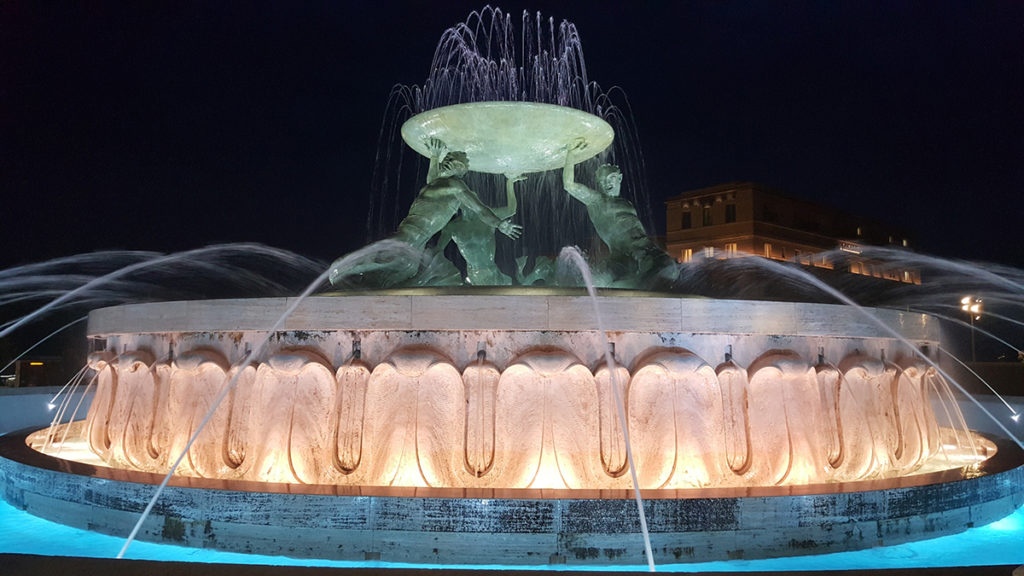
After just one or two more pastizzi, we waved our goodbyes to the Il-Funtana tat-Tritoni, the Tritons’ Fountain, the beautiful fountain on the periphery of the City Gates.
We have already booked our flights to return to Valletta next summer, and we will stay in the hotel where, once upon a time, falcons were reared, and where we intend to find out about the real ‘Maltese Falcon’. We are also planning to visit the Three Cities and travel even further afield… as promised, I will report back!

